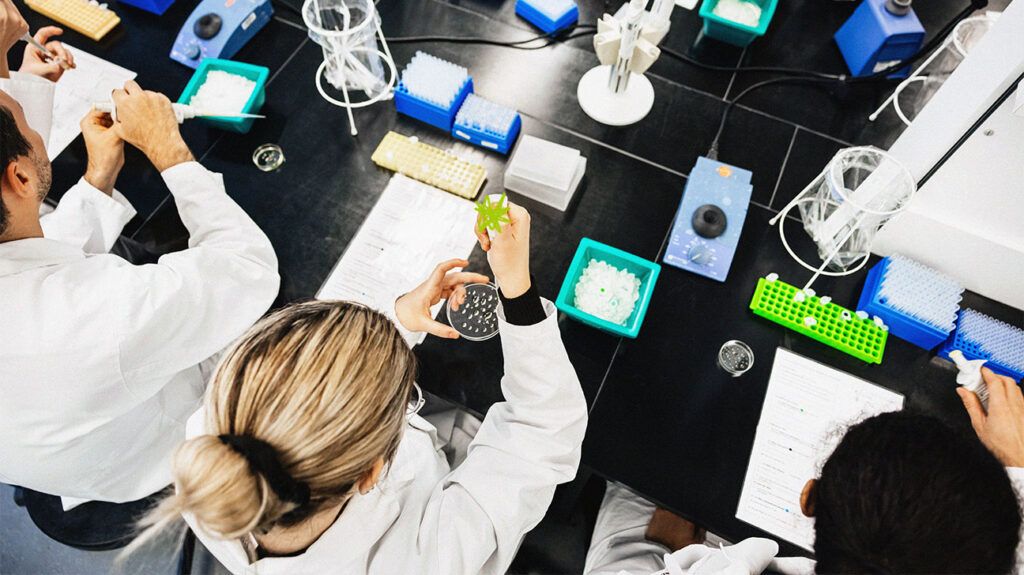Lymphocyte-rich Hodgkin’s lymphoma (LRHL) is a subtype of Hodgkin’s lymphoma, a cancer of the lymphatic system.
Hodgkin’s lymphoma (HL) is a cancer affecting the lymphatic system. This crucial part of the body’s immune system helps maintain health and protect against disease.
HL causes B-lymphocytes to multiply abnormally. As a result, these white blood cells collect in the lymph nodes, causing them to swell. The person also has an increased risk of infections with a compromised immune system.
LRHL is a subtype of classical HL (CHL), accounting for around 5% of people with HL. Affected lymph nodes contain typical or small lymphocytes with some Reed-Sternberg cells, which are giant, abnormal lymphocytes with two or more nuclei.
This article explores LRHL, its symptoms, causes, and treatments.

LRHL is a subtype of CHL, distinguished by a high number of lymphocytes. In other forms of CHL, the presence of Reed-Sternberg cells typically means a scarcity of healthy lymphocytes. However, in LRHL, these abnormal cells appear alongside an abundance of lymphocytes, suggesting a robust immune response.
LRHL is relatively rare compared to other subtypes of CHL, but it may have a better outlook, as doctors often diagnose it at an earlier stage.
What is classical Hodgkin’s lymphoma?
CHL is the most common form of HL, accounting for 95% of people with HL. The hallmark of CHL is the presence of Reed-Sternberg cells.
CHL has four distinct subtypes, each with specific features and development patterns. These subtypes include:
- Nodular sclerosis: This is the most frequently diagnosed subtype, noted for its sclerosis or scar tissue formation within the lymph nodes.
- Mixed cellularity: Characterized by a diverse mix of cells within the affected lymph nodes, including many Reed-Sternberg cells.
- Lymphocyte-rich: Features a high concentration of lymphocytes, indicating a robust immune response.
- Lymphocyte-depleted: The rarest form, marked by a scarcity of lymphocytes and many Reed-Sternberg cells.
Learn more about Hodgkin’s lymphoma.
In LRHL, “B symptoms” are rare. This group of symptoms is common in other types of HL and refers to fever, night sweats, and a loss of over 10% of body weight over 6 months.
However, in LRHL, a person may have swollen but painless lymph nodes in the neck, armpits, or groin and feel extremely tired.
Individuals should seek medical attention if they experience persistent symptoms that could indicate LRHL.
Fatigue and swollen lymph nodes do not mean a person has HL, but a doctor should evaluate them to rule out potential problems.
Early detection of LRHL is crucial for effective treatment and improved outcomes.
Like other types of HL, the exact cause of LRHL
A note about sex and gender
Sex and gender exist on spectrums. This article will use the terms “male,” “female,” or both to refer to sex assigned at birth. Click here to learn more.
Diagnosing LRHL may involve a physical examination and blood tests to rule out other conditions with similar symptoms. However, an excisional lymph node biopsy is the
The healthcare team sends cells from the biopsy to the laboratory for testing. The lab uses immunophenotyping to identify specific types of cells based on the markers on their surface and confirm LRHL.
Following the diagnosis, doctors may order further blood tests and imaging studies to examine the severity and extent of lymphoma spread throughout the body.
Treatment aims to achieve the highest possible cure rates with minimal side effects. Treatment plans are highly personalized, considering the specific stage of the disease and the person’s overall health.
Treatment strategies include:
- Chemotherapy: This is a first-line treatment for LRHL, involving drugs to kill cancer cells or stop them from growing. People may receive one or several chemotherapy drugs through oral administration or injection into a vein or muscle. The choice of drugs and the treatment cycle length depend on the disease’s severity and the person’s health.
- Radiation therapy: This treatment uses high-energy rays or particles to destroy cancer cells or prevent them from growing. For LRHL, doctors aim radiation at the lymph nodes and surrounding areas where the disease is present. Doctors can use radiation therapy for early stage LRHL or in combination with chemotherapy for more advanced stages.
- Targeted therapy and immunotherapy: These emerging treatments target specific aspects of cancer cells or enhance the body’s immune response against cancer.
After completing treatment, regular follow-up visits are essential to monitor the person’s recovery, check for signs of recurrence, and manage any long-term effects of treatment.
There are
The outlook for LRHL is generally favorable, especially when diagnosed early and treated appropriately.
Regular follow-ups are essential to monitor for disease progression or recurrence.
Counseling, support groups, and resources are available for those diagnosed with LRHL. Organizations focusing on lymphoma research and patient advocacy, such as the Lymphoma Research Foundation and the Leukemia & Lymphoma Society, are excellent sources of information, emotional support, and community for those affected by the disease.
Lymphocyte-rich Hodgkin’s lymphoma (LRHL) is a distinct subtype of Hodgkin’s lymphoma, characterized by the many lymphocytes present. Doctors often diagnose in its early stages.
Experts are unsure of the cause of this form of lymphatic cancer, but early diagnosis and appropriate treatment can lead to positive outcomes.
